News
Museveni pledges sh5b annually to Kampala SACCOs
The President’s announcement, made on Friday, July 18, 2025, during his tour of ghetto development projects in Nabukalu Zone, Bwaise II, Kawempe Division, came as part of his final zone visit in the nationwide wealth creation assessment campaign.
Museveni pledges sh5b annually to Kampala SACCOs
By: Nelson Mandela Muhoozi, Journalists @New Vision
_________________
In his long-standing commitment to uplifting the urban poor, President Yoweri Kaguta Museveni has pledged sh5 billion annually to support Kampala-based SACCOs under the ghetto youth structure.
The President’s announcement, made on Friday, July 18, 2025, during his tour of ghetto development projects in Nabukalu Zone, Bwaise II, Kawempe Division, came as part of his final zone visit in the nationwide wealth creation assessment campaign.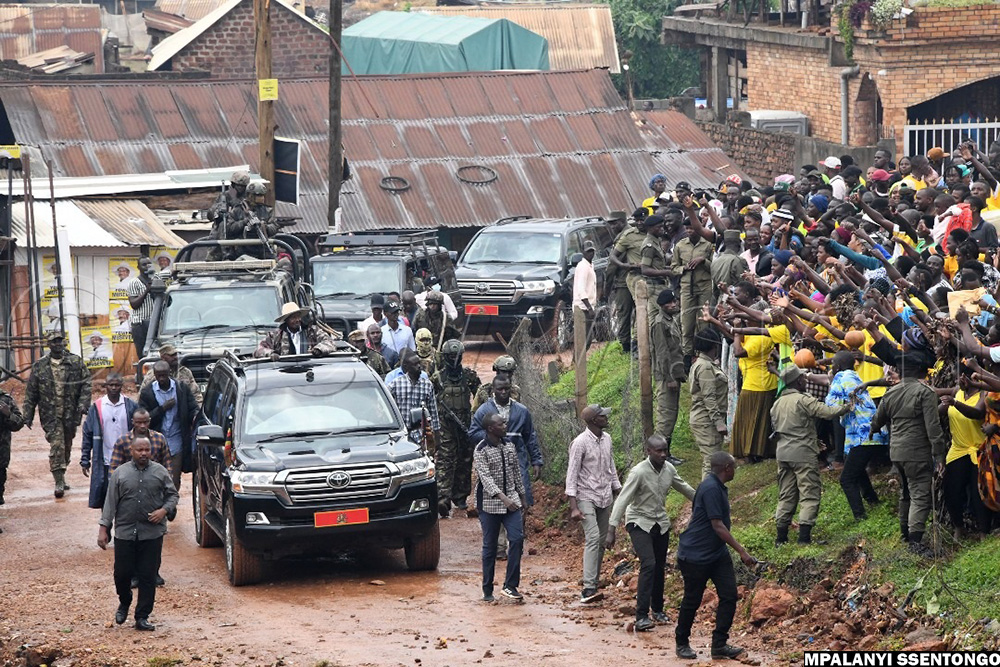
The President, visibly touched by the determination and resilience of ghetto youth, visited a range of community-led income-generating projects, including goat farming, mechanical repairs, bead making, electrical works, and even artistic ventures such as portrait painting.
According to him, each project exhibited a testament to self-reliance and showed how young Ugandans have transformed modest government seed capital into sustainable micro-enterprises.
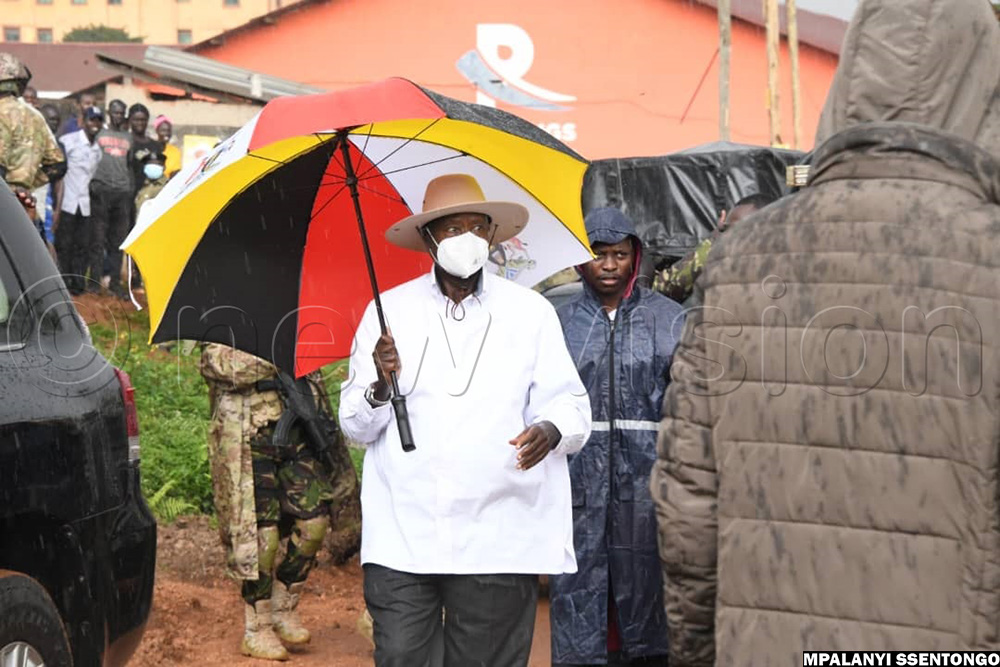
“I am not new to the ghetto,” the President told a large crowd at the Kawempe Nabukalu Zone, where he addressed enthusiastic youth. “I first came to the ghetto in 1968 while still at university. Even then, I knew the potential in you. You only needed recognition and support.”
He added, “The mistake has been with people who budget without understanding your needs. But now, I will ensure sh5 billion per year goes directly to Kampala ghetto SACCOs to support your wealth creation initiatives.”
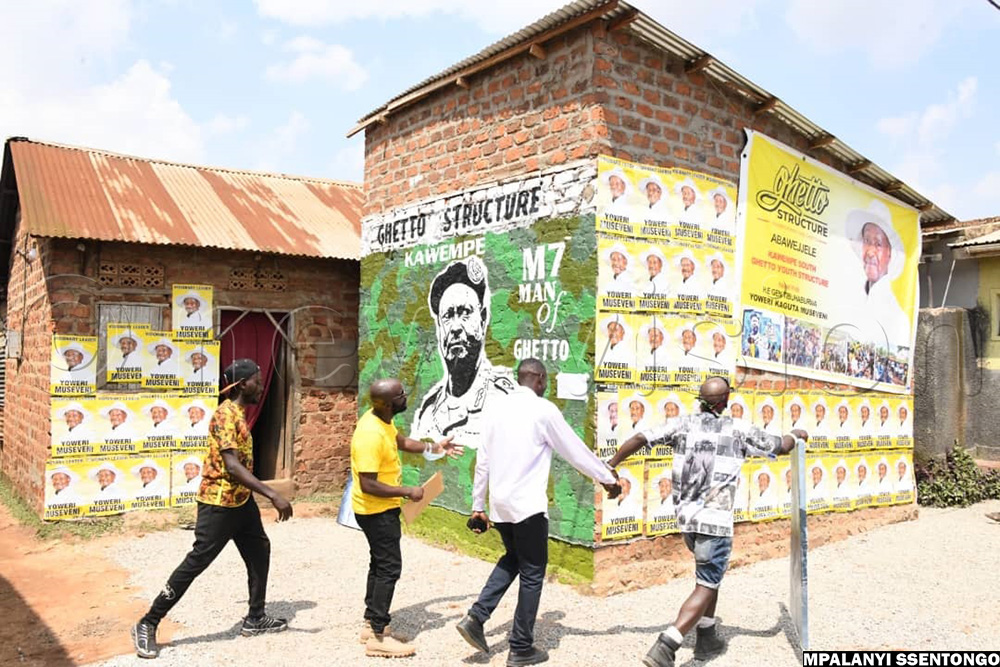
Kampala Ghetto Youth Success Stories
The President’s message resonated deeply with ghetto youth and leaders, many of whom shared testimonials of how previous government funding had helped transform their lives.
Emmanuel Busulwa, the Youth NRM Chairperson in Nabukalu Zone, said their group, composed of five members, initially received sh500,000 each.
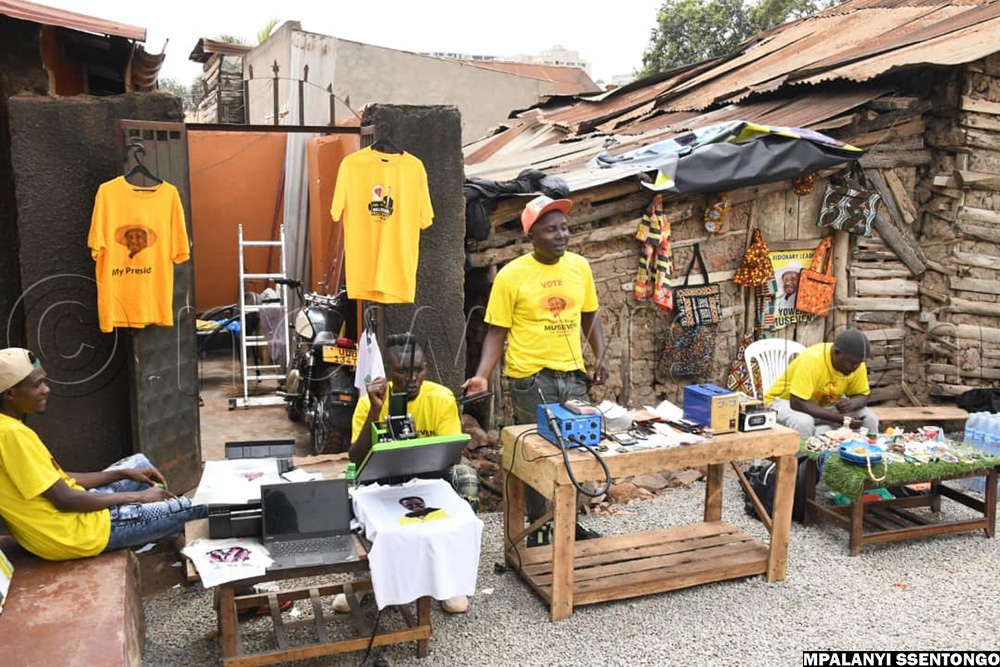
“We used the funds to begin mechanical repairs for phones and TVs. The profits we make are now supporting our small library business, and we are training street children as well,” Busulwa said, and added, ‘If we got sh10 million more, we would significantly expand our impact.”
Similarly, Umar Wagomba, a resident of Kawempe Mbogo, recounted how he used his allocation to kickstart Cybay, a bead-making, perfume-mixing, and hut-building enterprise.
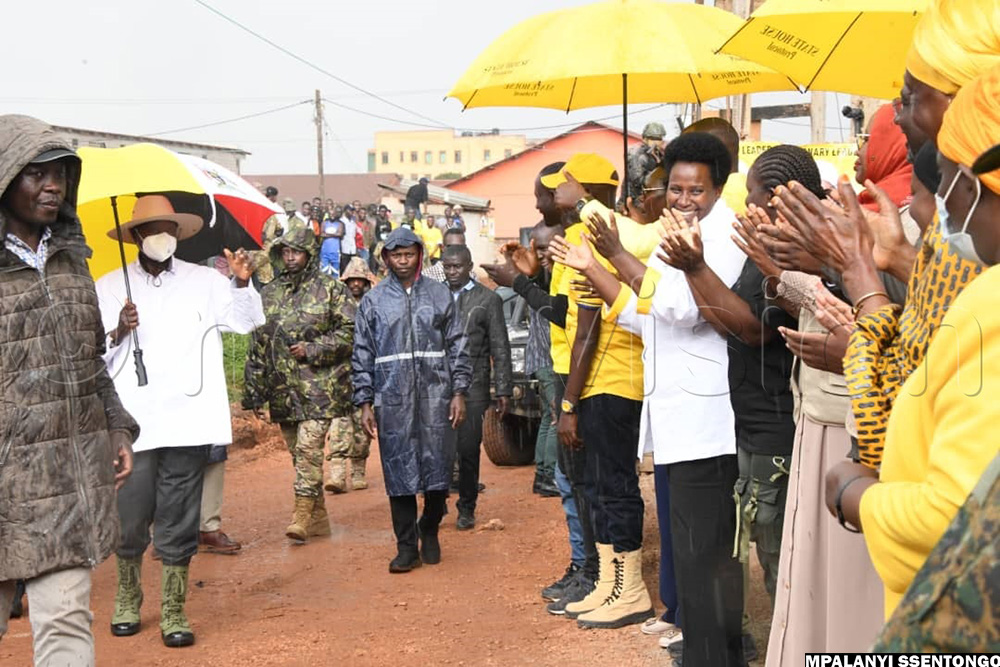
“With just sh500,000, I began working with 50 other youth. We have made profits and save regularly, but we need tailoring machines and about sh10 million in capital to scale,” Wagomba said.
Transformative Impact of Micro-Grants
Dorothy Apicia, another ghetto woman from Nabukalu, now runs a successful broom-making business. “I started with sh400,000. I source raw materials from Kiryandongo District and sell brooms for sh1,000 to sh3,000. I’m educating seven school-going children with this income. But I need about sh1.5 million to expand,” she said.
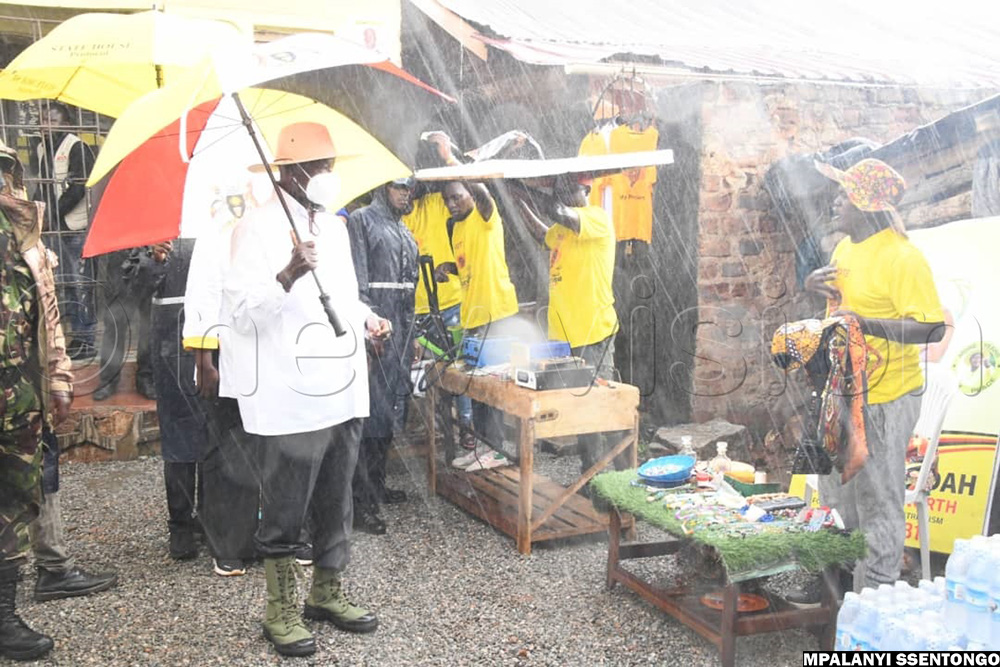
Wilberforce Mubiru, a beneficiary of sh2 million, turned to goat farming. “We bought three goats and now have 17. We even sold some to start constructing rentals. We are 40 in number and need more land for goat farming. We also tried chicken rearing, but space constraints hindered us,” he explained.
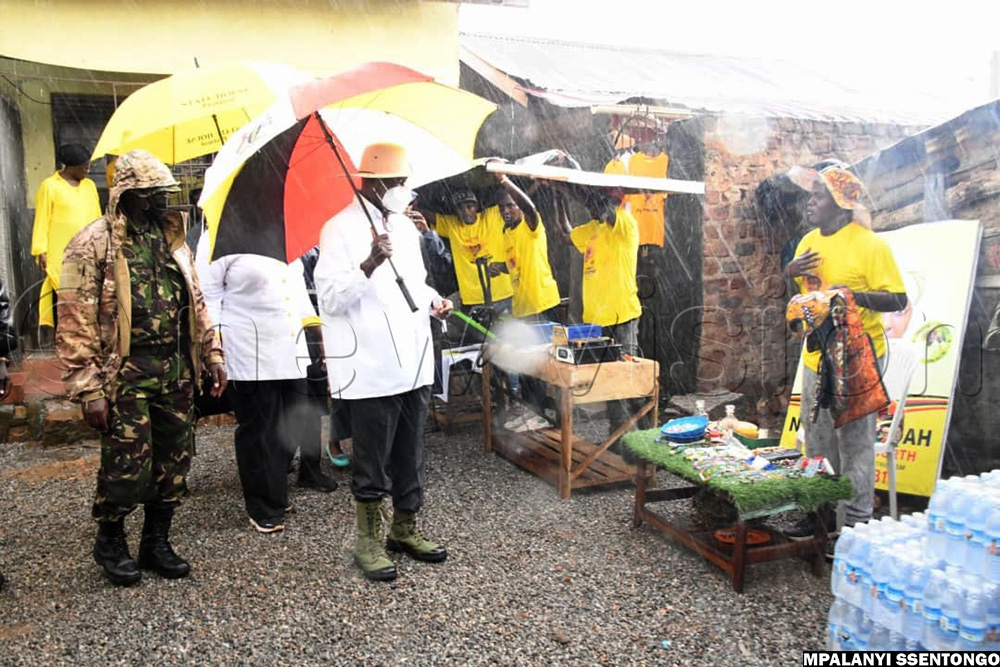
Herbert Magara, a portrait artist in the area, proudly shared, “We began with sh500,000 and got gigs to draw national figures like Gen. Salim Saleh. This has helped us promote our craft further.”
Local Leaders Welcome Presidential Support
Salim Uhuru, Kampala Central Mayor, hailed the President’s move: “We appreciate President Museveni for recognising the potential in our ghetto youth. This pledge is a game-changer. I call upon youth in other ghettos to get organised and benefit from these programs,” he said.
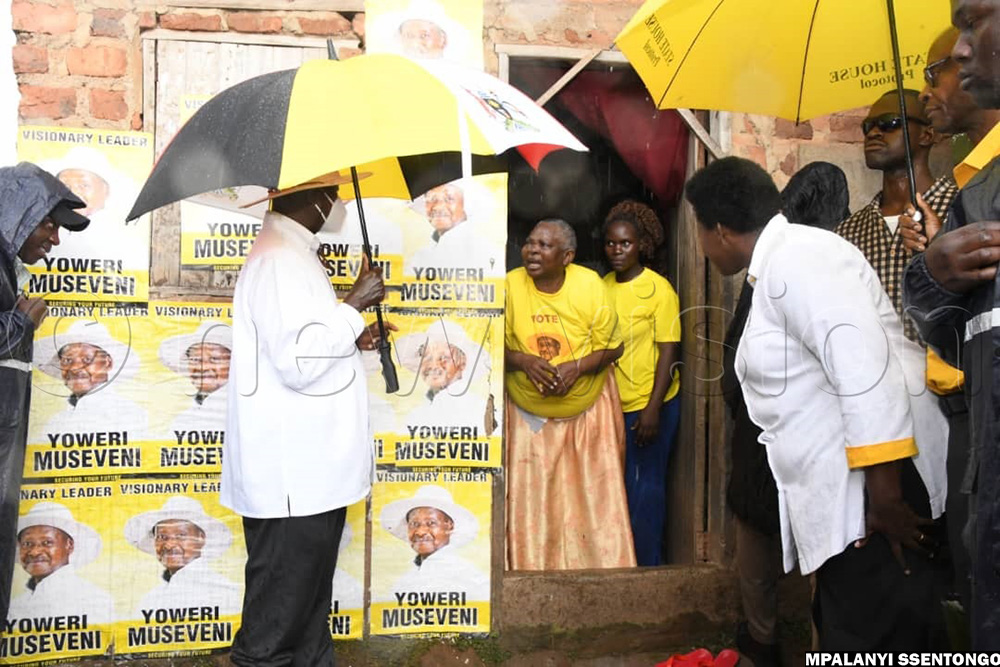
Sadam Hussain, the youth coordinator, echoed the sentiment, saying, “Back then, the number of ghetto youth that was around 700, is now about 3,000 strong. The President’s visit shows he understands our struggles. The sh140 million he gave earlier laid the foundation, and we now need skilling centres, more capital, and even infrastructure like gyms and drainage systems.”
Sadam added, “The rain that greeted the President was symbolic. That’s our daily reality—floods, lack of shelter, poor drainage. But today, we’ve seen a ray of hope.”
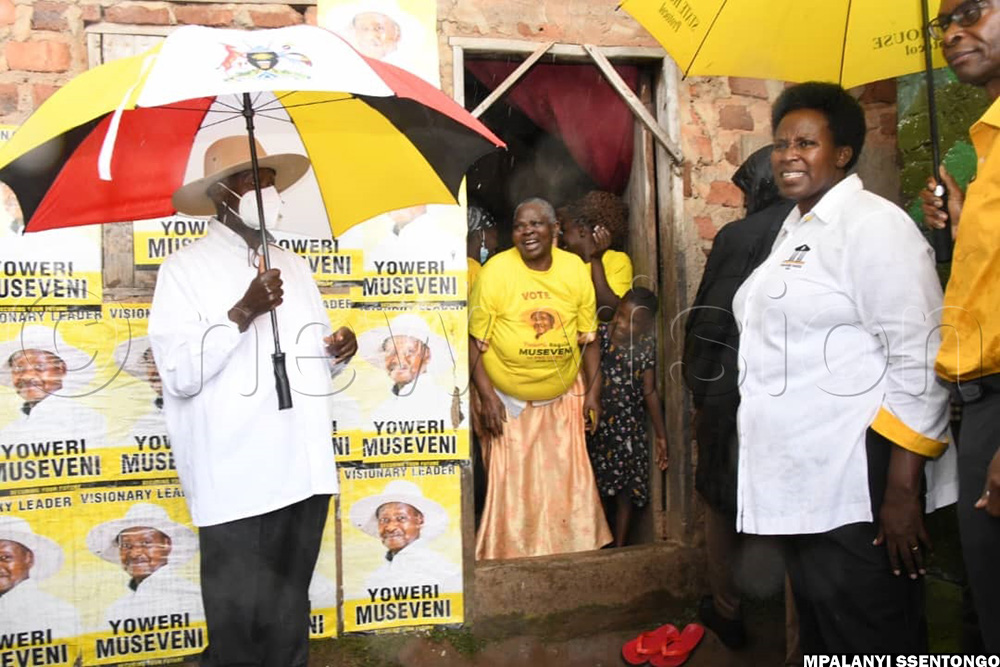
The Ghetto in Historical Context
President Museveni recalled his early interactions with the ghetto community and the Abawegere movement in Katwe, linking today’s visit to a decades-old relationship.
“I met Abawegere like Abbasi Kibazo, my comrade in 1968. He and other people later formed FRONASA, which fought for Uganda’s freedom. These youth contributed to the liberation struggle,” he said.
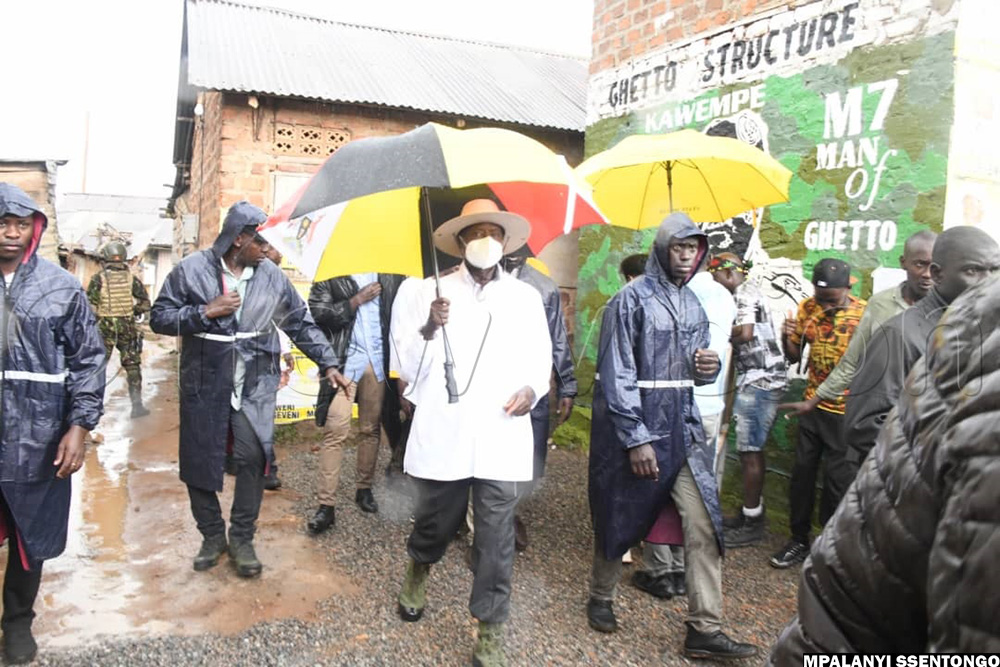
Abassi Kibazo Junior, the son to the late Abbasi Kibazo, also testified how his father was part of the struggle for liberation. Kibazo Junior, who now supervises the Parish Development Model (PDM) in Kampala, corroborated the historical link, noting that the President's vision has always been pro-poor.
Addressing Systemic Challenges
Museveni used the platform to critique Uganda’s development model, particularly in education and local governance.
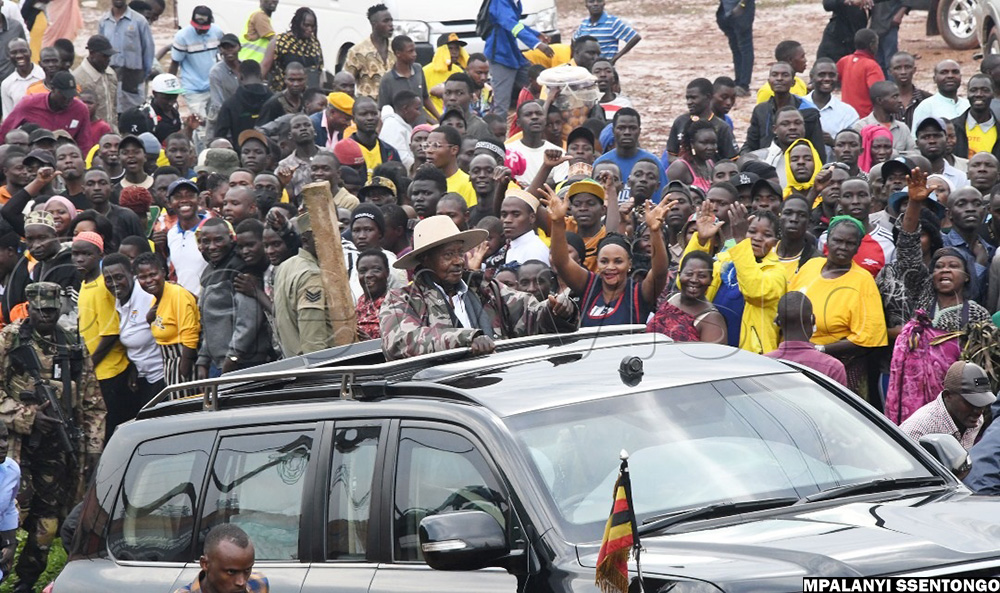
“We introduced UPE in 1997 for free education, but political divisions sabotage implementation. Headteachers demand fees, and LC5 leaders and MPs don’t care. We also waste money on new districts, creating new embassies, and officials instead of putting funds into schools or youth programs,” he said.
He emphasised that the root problem is budgeting that prioritises consumption over productivity. “We must spend money on wealth creation, not on paying more politicians. And the people must follow up on where their money goes,” he noted.
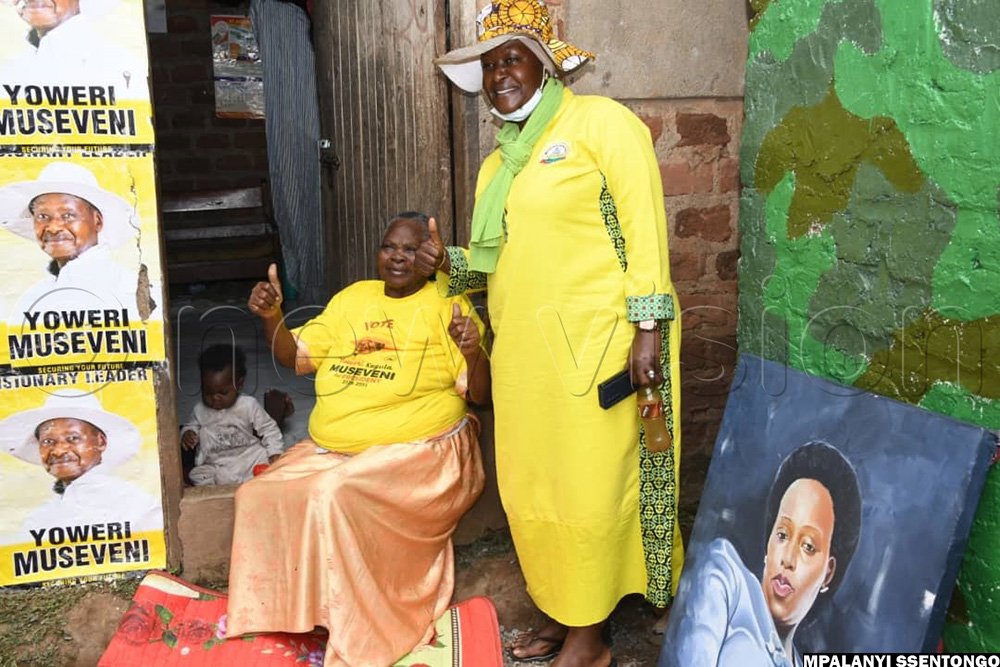
He pointed out how sh2.2 billion for PDM in Kawempe was insufficient, given the 22 parishes. “Imagine if each parish got just sh100 million—that’s not enough. Now, I’m pledging sh5 billion annually for Kampala ghettos alone. But I want you to follow that money.”
A Call for Political Unity and Vigilance
The President stressed the need for political clarity and vigilance among the poor. “Support those who understand your issues. Even in NRM, some don’t, but at least they don’t block progress. The opposition, however, misleads and disrupts,” he said.
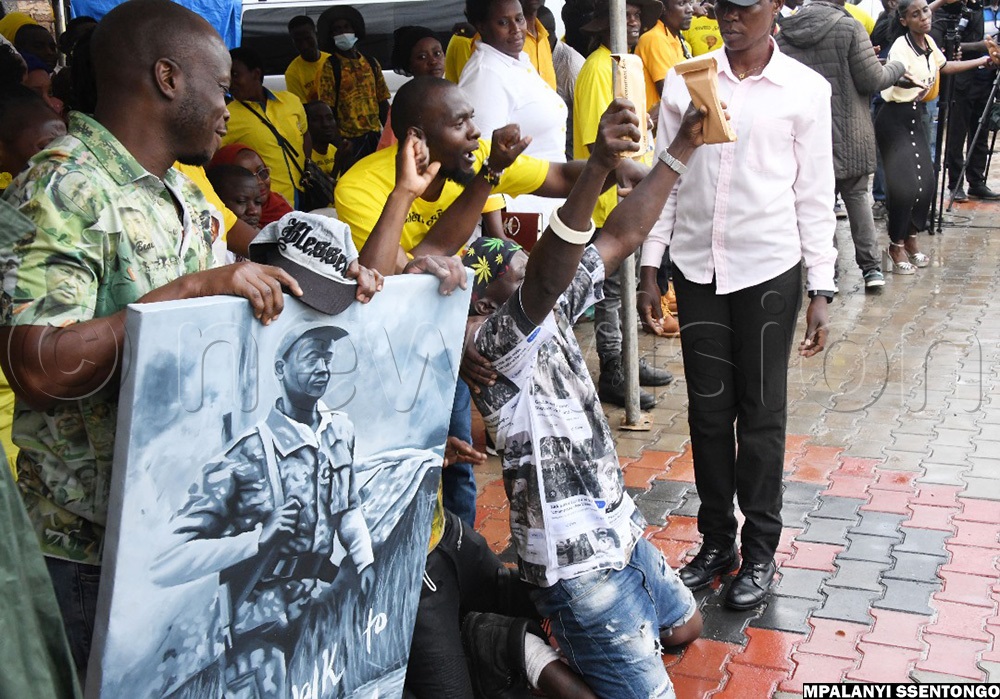
He added, “You must ensure budgeting supports the poor and wealth creation. And once money comes, monitor it. Where did the sh10 billion in Kawempe go over the past four years? Who stole the Emyooga, Youth Fund, and Women Fund?”
Youth Demands and Presidential Response
Katende Job Norman from the artists’ group requested additional support for their ventures. “We need capital for printing T-shirts, expanding our artistic and farming initiatives.” In response, the President donated sh20 million to the artist who painted a Picture of the President’s walk to freedom.
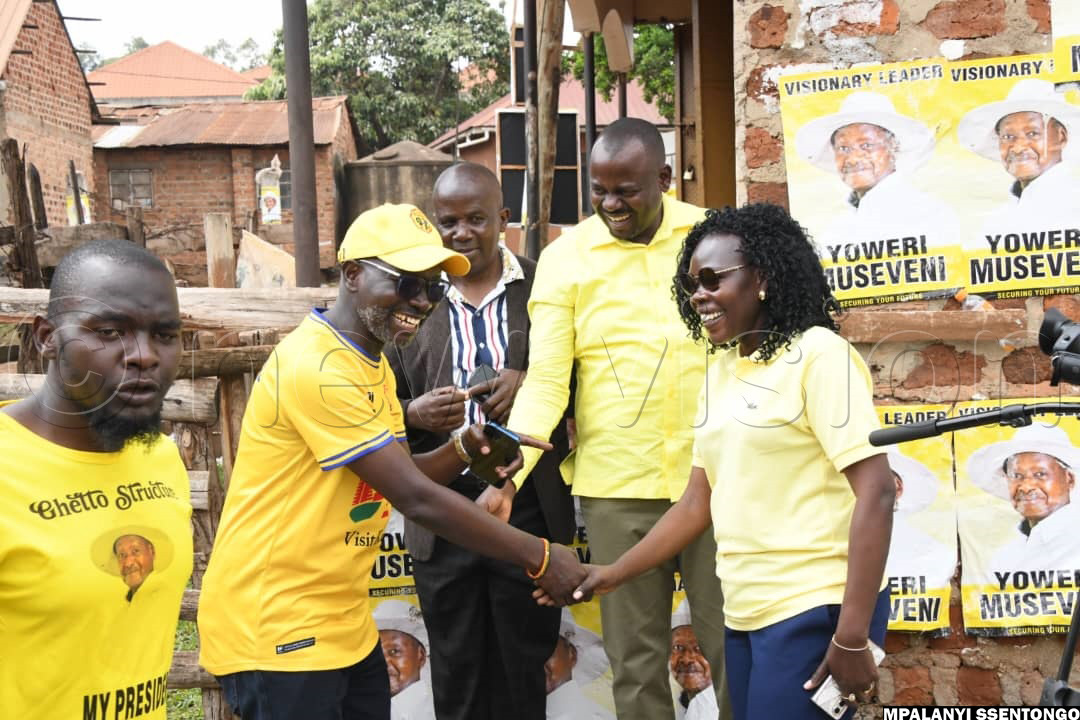
The youth also requested public gyms, improved drainage, better sanitation facilities, and equipment for events management. “We’re not just about survival,” one youth shouted from the crowd. “We are building a future!”
Museveni’s Vision for the Ghetto
The President cited his skilling hubs as a solution to urban unemployment. “Even uneducated youth can become productive in six months. We’ve already proved this in various places, and now we can do it in Kampala’s ghettos,” he said.
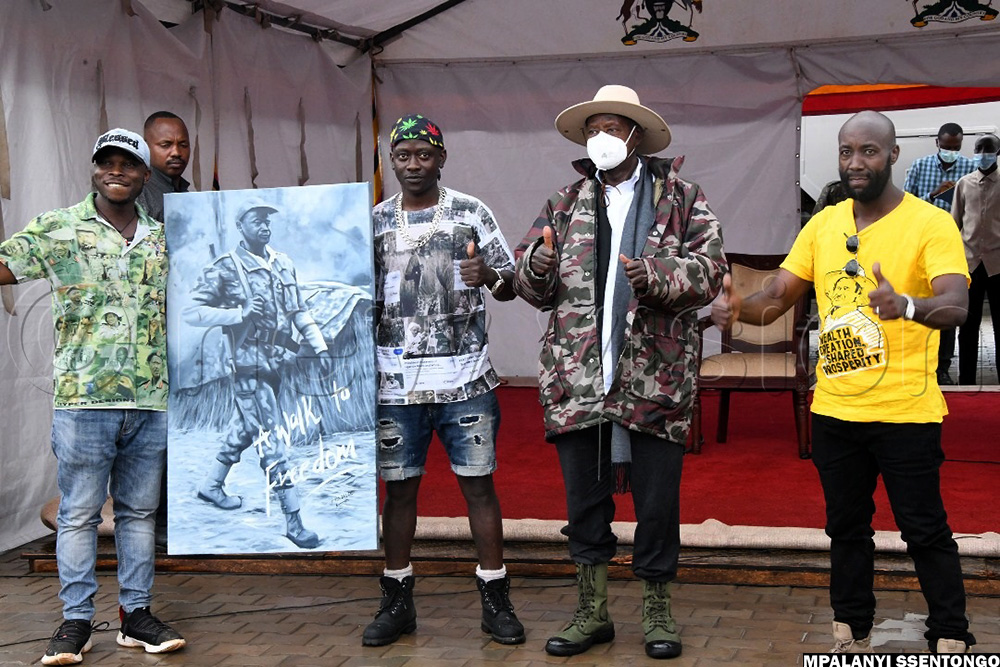
He concluded with a strong appeal for unity and political engagement: “All our progress will be wasted if you don’t stand up politically. I brought UPE, PDM, and now sh5bn for ghettos. But in Parliament, I may lose if you elect those who don’t care. Be vigilant and support the right leaders.”
The President’s convoy drove off amid chants of “Museveni oyee!” and addressed crowds at Kawempe playground as he headed to Kawempe Mbogo Mosque Playground to address ghetto youth.